DORA-MITTELBAU
Date: 9 april 2016
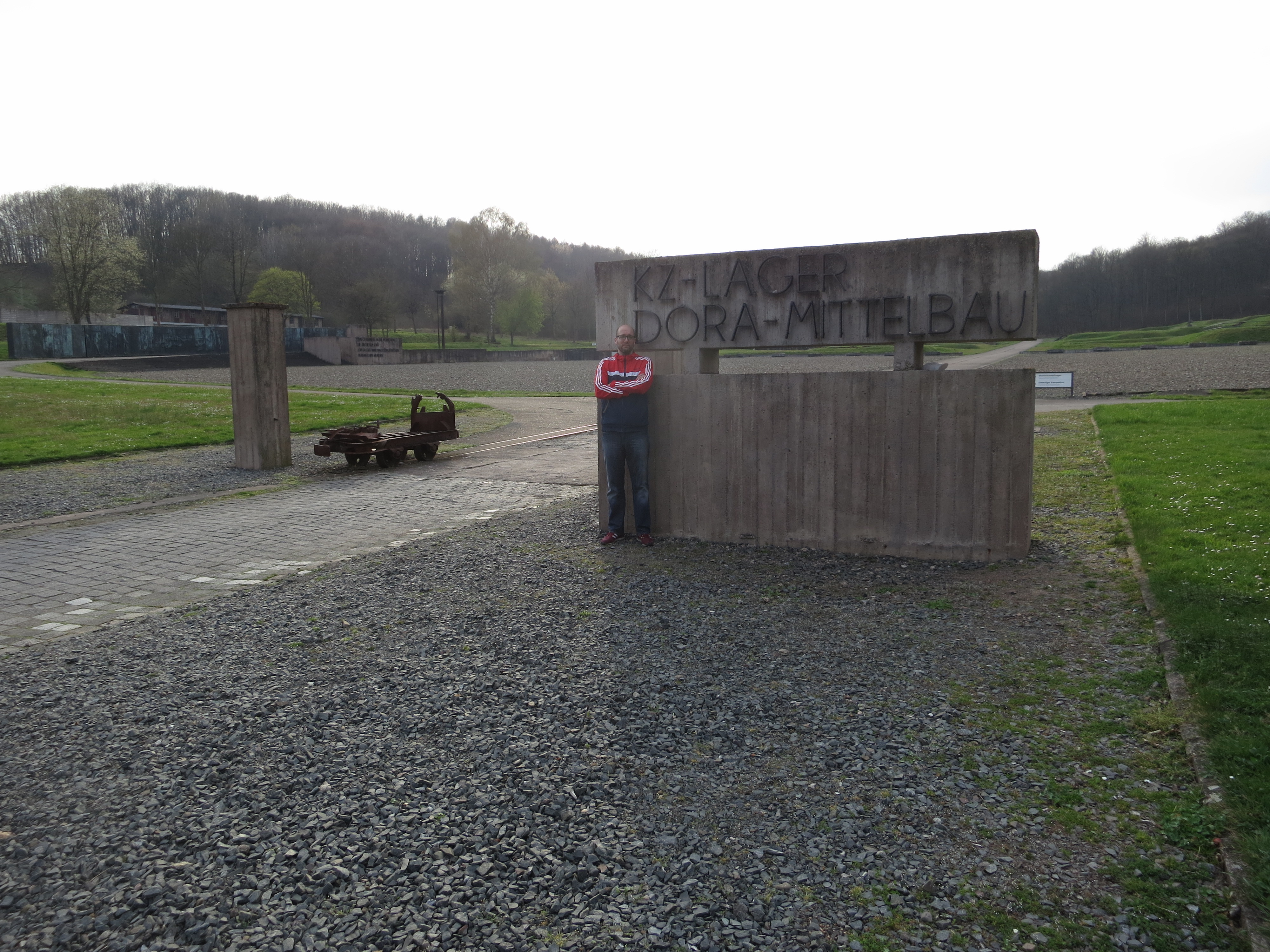 Mittelbau-Dora (also Dora-Mittelbau and Nordhausen-Dora) was a German Nazi concentration camp located near Nordhausen in Thuringia, Germany. It was established in late summer 1943 as a subcamp of Buchenwald concentration camp, supplying labour for extending the nearby tunnels in the Kohnstein and for manufacturing the V-2 rocket and the V-1 flying bomb. In the summer of 1944, Mittelbau became an independent concentration camp with numerous subcamps of its own. In 1945, most of the surviving inmates were evacuated by the SS. On 11 April 1945, US troops freed the remaining prisoners. Around one in three of the roughly 60,000 prisoners who were sent to Mittelbau did not survive.
Today, the site hosts a memorial and museum.(wikipedia)
Mittelbau-Dora (also Dora-Mittelbau and Nordhausen-Dora) was a German Nazi concentration camp located near Nordhausen in Thuringia, Germany. It was established in late summer 1943 as a subcamp of Buchenwald concentration camp, supplying labour for extending the nearby tunnels in the Kohnstein and for manufacturing the V-2 rocket and the V-1 flying bomb. In the summer of 1944, Mittelbau became an independent concentration camp with numerous subcamps of its own. In 1945, most of the surviving inmates were evacuated by the SS. On 11 April 1945, US troops freed the remaining prisoners. Around one in three of the roughly 60,000 prisoners who were sent to Mittelbau did not survive.
Today, the site hosts a memorial and museum.(wikipedia) From 6 april until 10 april 2016 I did a city trip to Goslar. On our way to Goslar we first visited the Wewelsburg castle (see special Heinrich Himmler). One of other trips on this citytrip was going to Dora Mittelbau, 9 april 2016. The camp was liberated 11 february 2045 so we visited the camp almost 71 years later after liberation. The next day there was a memorial we unfortunately couldn't visit. The visit of the camp was one of the highlights of our trip. This was becaus of the underground tunnels that are very impressive and recommended to visit. Besides this we had a great guide. I usually do not like guided tours because most of the time I already knew a lot of the places, but this guide was really good. To visit the tunnels your obliged to do a guided tour, because you cannot enter the tunnels without a guide. The whole area including the tunnels are free of charge. You can give a donation, but this is not obliged.
Conclusion: recommend.
Auschwitz
Auschwitz concentration camp (German: Konzentrationslager Auschwitz, also KZ Auschwitz was a network of German Nazi concentration camps and extermination camps built and operated by the Third Reich in Polish areas annexed by Nazi Germany during World War II. It consisted of Auschwitz I (the original camp), Auschwitz II–Birkenau (a combination concentration/extermination camp), Auschwitz III–Monowitz (a labor camp to staff an IG Farben factory), and 45 satellite camps.
Auschwitz I
Date: 29 Mai 2013
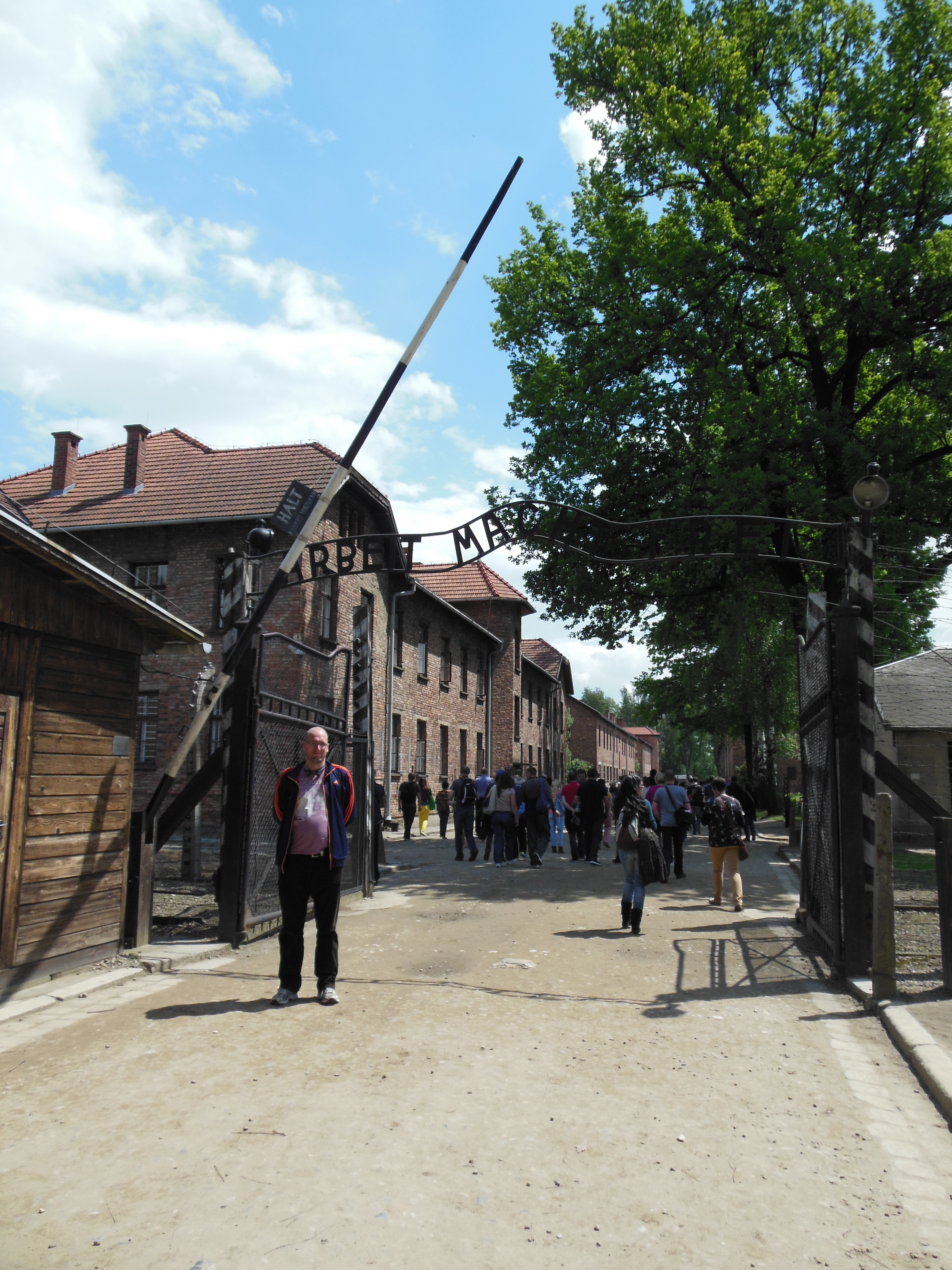 After this part of Poland was annexed by Nazi Germany, Oswiecim (Auschwitz) was located administratively in Germany, Province of Upper Silesia, Regierungsbezirk Kattowitz, Landkreis Bielitz. It was first suggested as a site for a concentration camp for Polish prisoners by SS-Oberführer Arpad Wigand, an aide to Higher SS and Police Leader for Silesia, Erich von dem Bach-Zelewski. Bach-Zelewski had been searching for a site to house prisoners in the Silesia region, as the local prisons were filled to capacity. Richard Glücks, head of the Concentration Camps Inspectorate, sent former Sachsenhausen concentration camp commandant Walter Eisfeld to inspect the site, which already held sixteen dilapidated one-story buildings that had once served as an Austrian and later Polish Army barracks and a camp for transient workers.[17] Reichsführer-SS Heinrich Himmler, head of the Schutzstaffel (SS), approved the site in April 1940, intending to use the facility to house political prisoners. SS-Obersturmbannführer (lieutenant colonel) Rudolf Höss oversaw the development of the camp and served as the first commandant. SS-Obersturmführer (senior lieutenant) Josef Kramer was appointed Höss's deputy. Auschwitz I, the original camp, became the administrative center for the whole complex
After this part of Poland was annexed by Nazi Germany, Oswiecim (Auschwitz) was located administratively in Germany, Province of Upper Silesia, Regierungsbezirk Kattowitz, Landkreis Bielitz. It was first suggested as a site for a concentration camp for Polish prisoners by SS-Oberführer Arpad Wigand, an aide to Higher SS and Police Leader for Silesia, Erich von dem Bach-Zelewski. Bach-Zelewski had been searching for a site to house prisoners in the Silesia region, as the local prisons were filled to capacity. Richard Glücks, head of the Concentration Camps Inspectorate, sent former Sachsenhausen concentration camp commandant Walter Eisfeld to inspect the site, which already held sixteen dilapidated one-story buildings that had once served as an Austrian and later Polish Army barracks and a camp for transient workers.[17] Reichsführer-SS Heinrich Himmler, head of the Schutzstaffel (SS), approved the site in April 1940, intending to use the facility to house political prisoners. SS-Obersturmbannführer (lieutenant colonel) Rudolf Höss oversaw the development of the camp and served as the first commandant. SS-Obersturmführer (senior lieutenant) Josef Kramer was appointed Höss's deputy. Auschwitz I, the original camp, became the administrative center for the whole complexBirkenau
Date: 29 Mai 2013
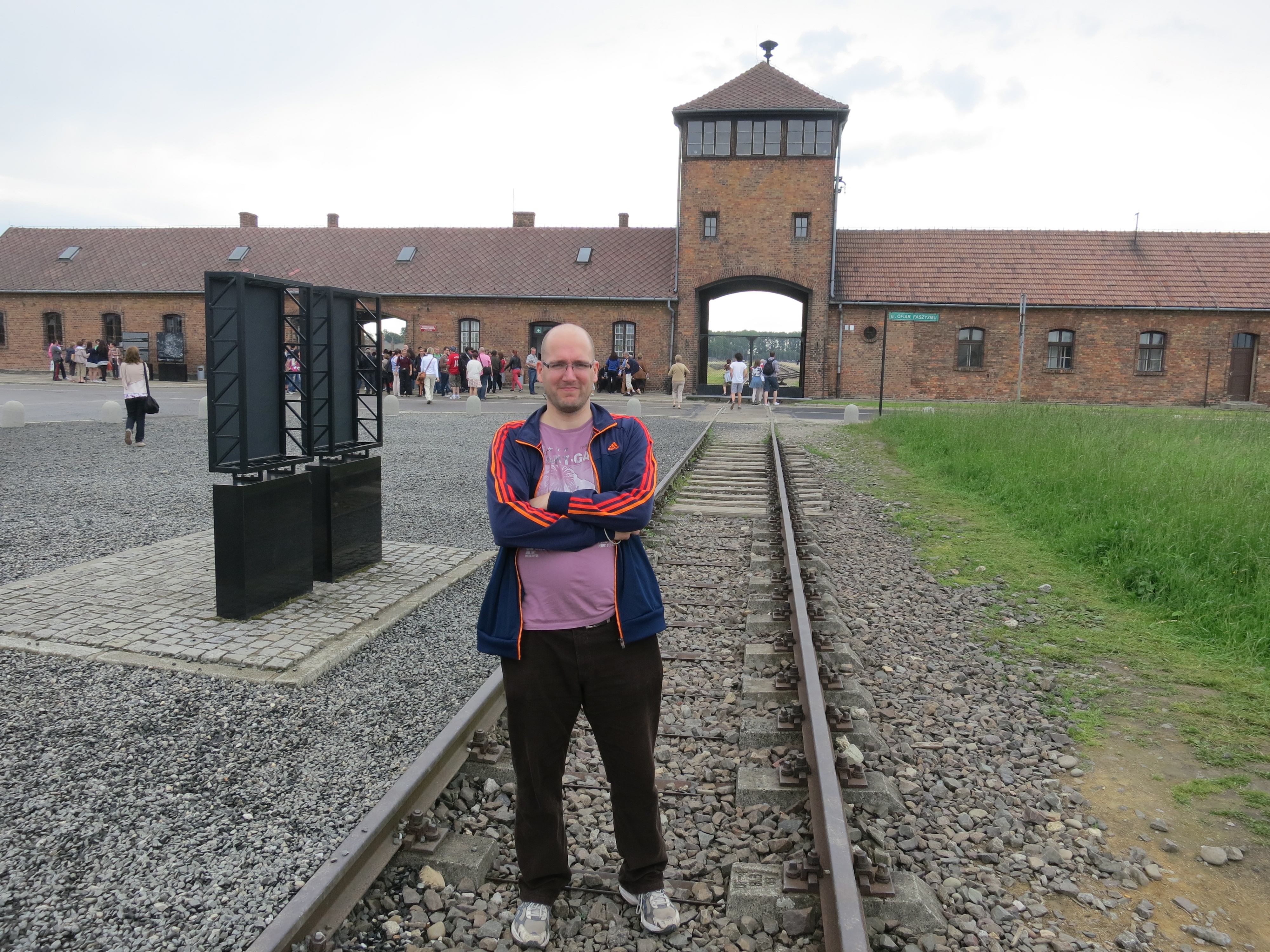 Construction on Auschwitz II-Birkenau began in October 1941 to ease congestion at the main camp. Reichsführer-SS Heinrich Himmler, head of the Schutzstaffel (SS), intended the camp to house 50,000 prisoners of war, who would be interned as forced laborers. In 1941-1942 Hitler had decided to annihilate the Jewish people, so Birkenau was repurposed as a combination labor camp / extermination camp. The Birkenau camp, the four crematoria, a new reception building, and hundreds of other buildings were planned and realized. The first gas chamber at Birkenau was the "red house" (called Bunker 1 by SS staff), a brick cottage converted into a gassing facility by tearing out the inside and bricking up the windows. It was operational by March 1942. In early 1943, the Nazis decided to increase greatly the gassing capacity of Birkenau. By June 1943, all four crematoria were operational. Most of the victims were killed using these structures.
Construction on Auschwitz II-Birkenau began in October 1941 to ease congestion at the main camp. Reichsführer-SS Heinrich Himmler, head of the Schutzstaffel (SS), intended the camp to house 50,000 prisoners of war, who would be interned as forced laborers. In 1941-1942 Hitler had decided to annihilate the Jewish people, so Birkenau was repurposed as a combination labor camp / extermination camp. The Birkenau camp, the four crematoria, a new reception building, and hundreds of other buildings were planned and realized. The first gas chamber at Birkenau was the "red house" (called Bunker 1 by SS staff), a brick cottage converted into a gassing facility by tearing out the inside and bricking up the windows. It was operational by March 1942. In early 1943, the Nazis decided to increase greatly the gassing capacity of Birkenau. By June 1943, all four crematoria were operational. Most of the victims were killed using these structures.From 27 Mai until 1 June 2013 I went for a citytrip to Krakow, Poland. One of the main purpose was to visit Auschwitz. We rented a car in Krakow and then went to Auschwitz. The drive to Auschwitz lasted an hour. We visited both Auschwitz and Birkenau in one day but this was for me too short, because the complex is quite big. Especially Birkenau is big complex so we hadn't enough time to visit everything I wanted.
Conclusion: Very Touristic, Go for 2 days
Natzwiller - Struthof
Date: 16 Mai 2012
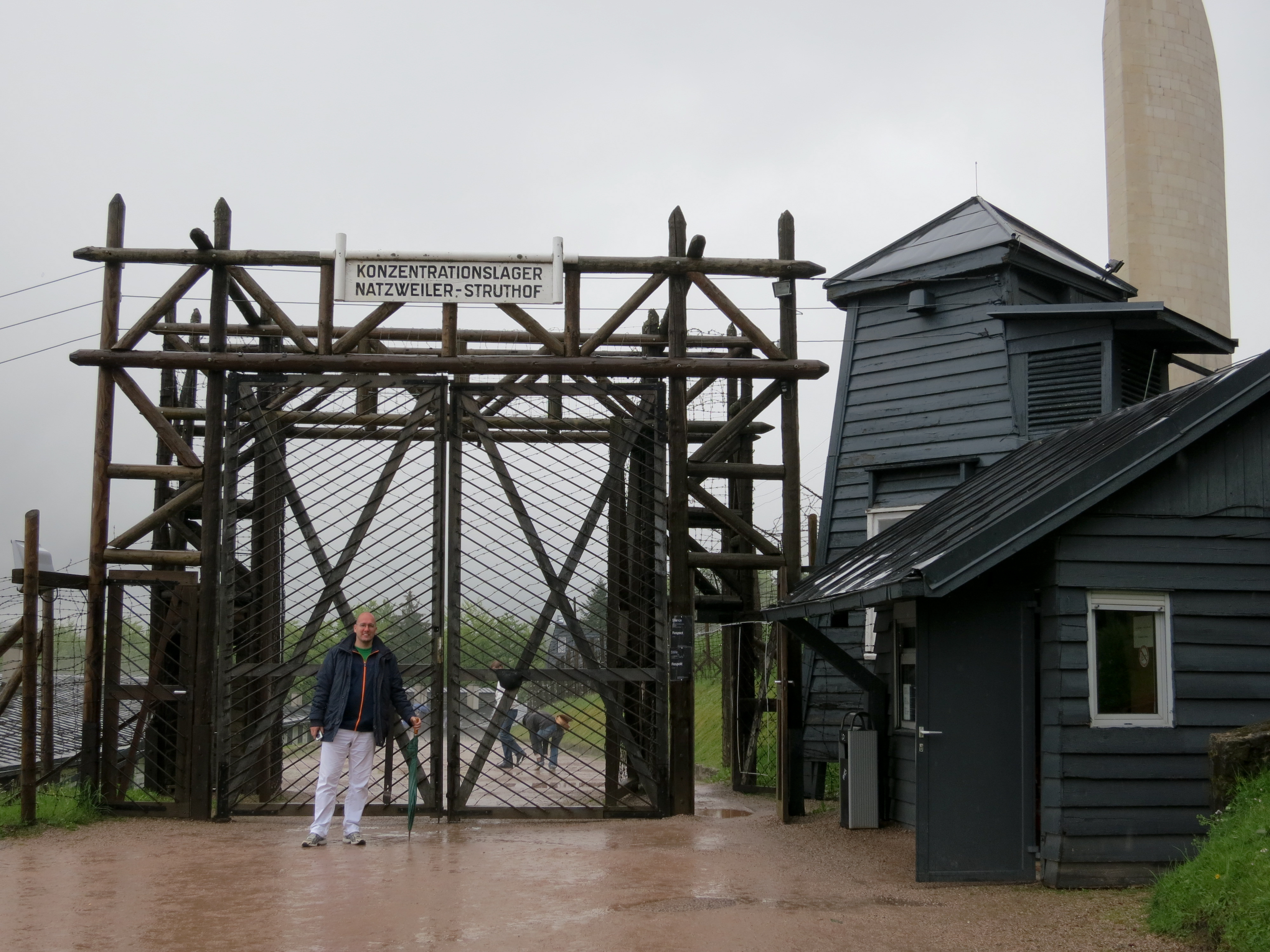 Natzweiler-Struthof was a German-run concentration camp located in the Vosges Mountains close to the Alsatian village of Natzwiller (German Natzweiler) in France, and the town of Schirmeck, about 50 km (31 mi) south west from the city of Strasbourg. Natzweiler-Struthof was the only concentration camp established by the Nazis on present-day French territory, though there were French-run temporary camps such as the one at Drancy. At the time from 1941 to 1944, the Alsace area in which it was established was administered by Germany as it was an integral part of the German Reich. The camp operated from 21 May 1941 to early September 1944 with prisoners. A small staff of Nazi SS remained, found when the camp was liberated by the French First Army under the command of the U.S. Sixth Army Group on 23 November 1944.
Natzweiler-Struthof was a German-run concentration camp located in the Vosges Mountains close to the Alsatian village of Natzwiller (German Natzweiler) in France, and the town of Schirmeck, about 50 km (31 mi) south west from the city of Strasbourg. Natzweiler-Struthof was the only concentration camp established by the Nazis on present-day French territory, though there were French-run temporary camps such as the one at Drancy. At the time from 1941 to 1944, the Alsace area in which it was established was administered by Germany as it was an integral part of the German Reich. The camp operated from 21 May 1941 to early September 1944 with prisoners. A small staff of Nazi SS remained, found when the camp was liberated by the French First Army under the command of the U.S. Sixth Army Group on 23 November 1944.Dachau
Date: 24 September 2010
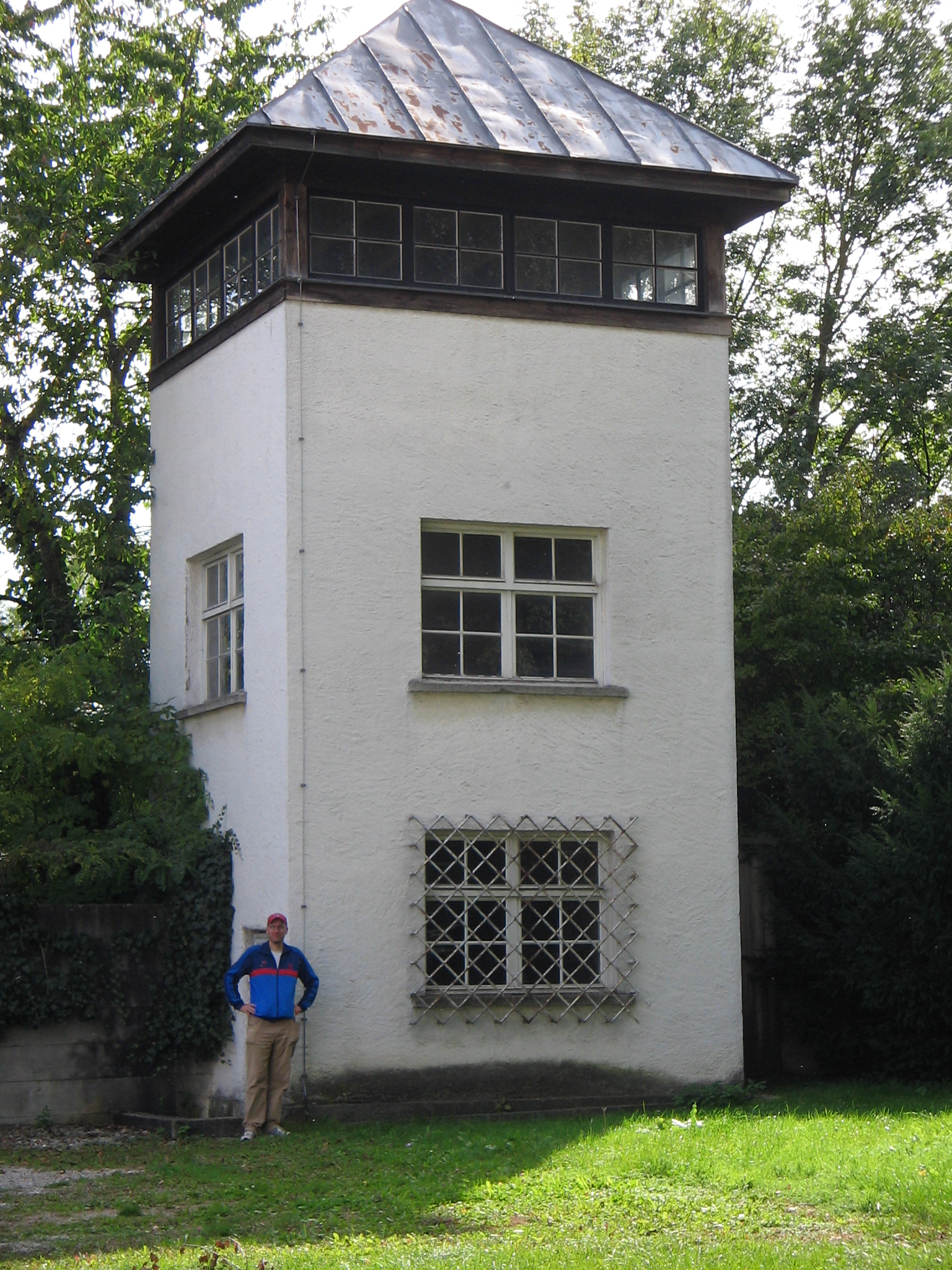 Dachau concentration camp (German: Konzentrationslager (KZ) Dachau, IPA: ['daxa?]) was the first of the Nazi concentration camps opened in Germany, intended to hold political prisoners. It is located on the grounds of an abandoned munitions factory northeast of the medieval town of Dachau, about 16 km (10 mi) northwest of Munich in the state of Bavaria, in southern Germany.[3] Opened in 1933 by Heinrich Himmler, its purpose was enlarged to include forced labor, and eventually, the imprisonment of Jews, ordinary German and Austrian criminals, and eventually foreign nationals from countries that Germany occupied or invaded. The Dachau camp system grew to include nearly 100 sub-camps, which were mostly work camps or "Arbeitskommandos," and were located throughout southern Germany and Austria.[4] The camps were liberated by U.S. forces on 29 April 1945.
Dachau concentration camp (German: Konzentrationslager (KZ) Dachau, IPA: ['daxa?]) was the first of the Nazi concentration camps opened in Germany, intended to hold political prisoners. It is located on the grounds of an abandoned munitions factory northeast of the medieval town of Dachau, about 16 km (10 mi) northwest of Munich in the state of Bavaria, in southern Germany.[3] Opened in 1933 by Heinrich Himmler, its purpose was enlarged to include forced labor, and eventually, the imprisonment of Jews, ordinary German and Austrian criminals, and eventually foreign nationals from countries that Germany occupied or invaded. The Dachau camp system grew to include nearly 100 sub-camps, which were mostly work camps or "Arbeitskommandos," and were located throughout southern Germany and Austria.[4] The camps were liberated by U.S. forces on 29 April 1945.